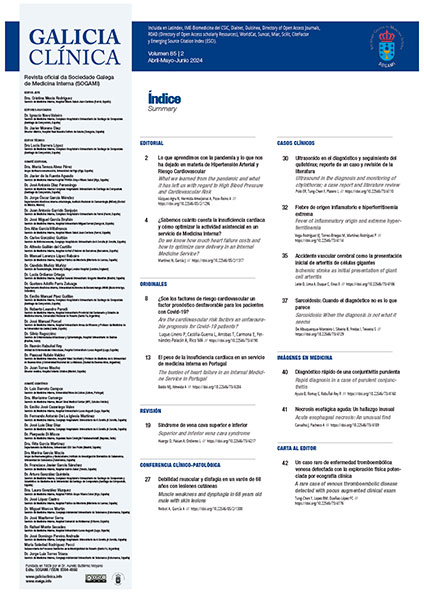Abstract
A 72-year-old male patient, hypertensive and a smoker, was admitted to an Internal Medicine Service for the evaluation of total dysphagia and acute bronchitis with a one week history, without hematemesis or abdominal pain. Thoracic and neck computed tomography revealed only esophageal wall prominence with edema. Angiography showed no vascular abnormalities. Upper gastrointestinal endoscopy revealed diffusely affected blackened esophagus (Figure 1). Esophageal biopsies showed fibrinonecrotic and fibrinoleukocytic exudate, with negative results for Cytomegalovirus and Herpes. He was initiated on esomeprazole 40mg twice daily and given a one week oral fasting period, which resulted in favorable endoscopic progression (Figures 2 and 3), allowing for a gradual reintroduction of an oral diet. A neoplasia evaluation yielded negative results. Vascular risk factors (hypertension and dyslipidemia) were assessed and controlled. He was discharged after three weeks on aspirin 100mg, perindopril 4mg and rosuvastatin 20mg. Acute esophageal necrosis, also known as "black esophagus" or acute necrotizing esophagitis, is a rare but severe condition characterized by diffuse circumferential darkening of the esophageal mucosa. The estimated incidence is 0.28%, predominantly in males, usually occurring around age 75 (1). The exact etiology is not fully understood, but it is believed to be multifactorial and secondary to hemodynamic compromise in patients with risk factors for vascular diseases and susceptibility to ischemic events (2). Common comorbidities include diabetes, hypertension, alcohol abuse and chronic kidney disease (3). Diagnosis is typically made through endoscopy, and the key aspects of treatment involve addressing the underlying cause, improving blood supply and suppressing gastric acid production (2).
This work is licensed under a Creative Commons Attribution-NonCommercial-NoDerivatives 4.0 International License.
Copyright (c) 2023 GaliciaClinica - Official Journal of the Galician Society of Internal Medicine (SOGAMI)


